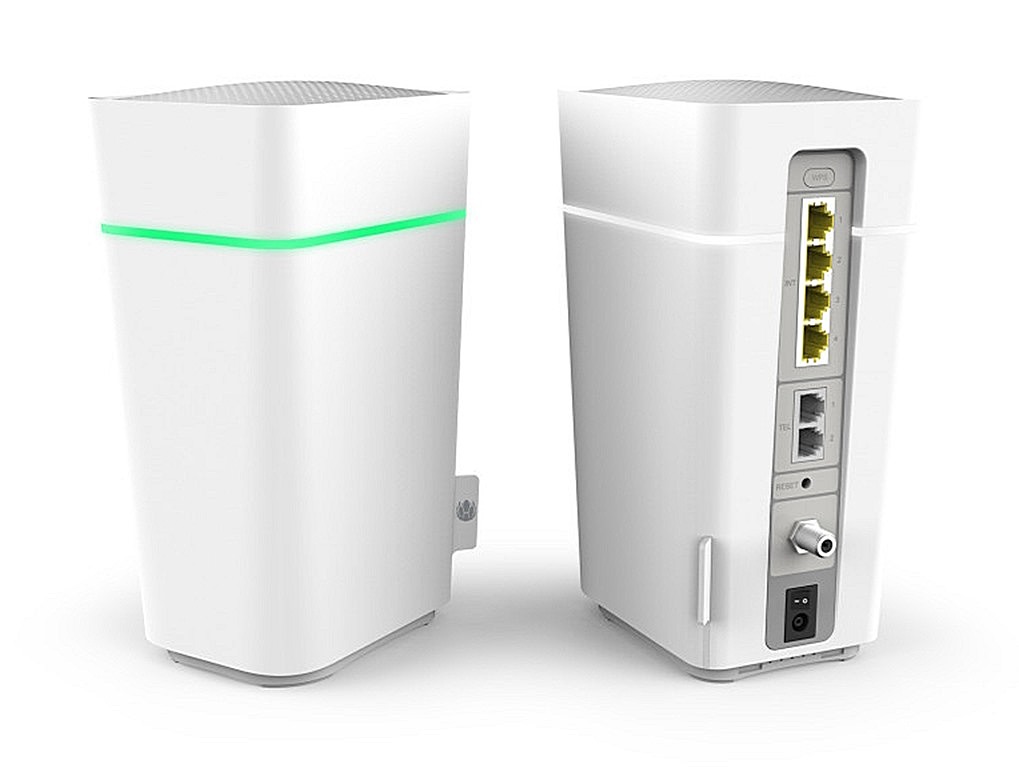A Look at Virgin Media UK’s Future HUB 4 Gigabit Connect Box Router UPDATE
The forthcoming rollout of cable broadband ISP Virgin Media’s new 1Gbps service (here) – expected to cover the whole of their UK network by 2021 – will be accompanied by a new DOCSIS 3.1 compatible HUB 4 router (aka – Gigabit Connect Box / Connect Box v2) and here’s everything we know about the new device so far.
Liberty Global, Virgin’s parent operator, has already launched their new DOCSIS 3.1 (cable networking standard) powered Hybrid Fibre Coax (HFC) and Fibre-to-the-Premises (FTTP) based Gigabit speed broadband service in several other European counties before the United Kingdom (e.g. Poland and Germany). As such we have a fairly good idea of what to expect over this side of the channel. But first, a recap.
The existing DOCSIS 3.0 based Hub 3.0 router, which is merely a re-branded version of Liberty Global’s Connect Box router (based off an ARRIS TG2492S/CE), has of course had its fair share of problems (e.g. the Intel Puma 6 latency bug) and so subscribers will be keen to move on to its replacement (initially only those on their DOCSIS 3.1 plans will benefit but it is backwards compatible so we can see it filtering down eventually).
Advertisement
The replacement, which we first touched on last year (here), seems likely to be the Gigabit Connect Box (aka – Connect Box 2) but this will be rebranded to the Hub 4 and coloured black/red for its launch in the United Kingdom. Until recently we only knew that this device featured 4 x Gigabit LAN ports, 2 x Phone ports (handy for Virgin’s VoIP service) and we understand that the theoretical WiFi peak speed via 5GHz and 2.4GHz combined is over 2100Mbps (not yet confirmed but we know the 5GHz band alone can do 1.3Gbps+ at peak).

Since then we’ve been able to confirm that this is in fact based off Arris’s Touchstone TG3492 Telephony Gateway router, which in the United Kingdom has been given the model code of TG3492LG-VMB. The unit is a custom model and so you won’t find it listed on Arris’s website, which has made it difficult to know what the exact specifications are (Virgin won’t say) but we do have a few new details beyond those mentioned above.
So far as we’ve been able to confirm the Hub 4 also features an Intel Puma 7 (CE2752) CPU, can handle 32×8 bonded channels on DOCSIS 3.0 and 2×2 OFDM and OFDMA on DOCSIS 3.1, supports 3×3 MIMO on 2.4GHz WiFi (802.11n) and 4×4 MIMO on 5GHz (802.11ac Wave 2 – 1.3Gbps), 512MB of NAND flash memory and 1GB of DDR3L random access memory. Apparently it has a total of 10 or 11 internal antennas (we’ve seen both figures stated).
Advertisement
Judging by these specs the Gigabit Connect Box (Hub 4) is a very close match for Arris’s TG3442 router (except for the inclusion of a USB 3.0 port and a few other smaller differences – design etc.), which is in the public domain.
At this point we note that Liberty Global in Germany did in fact launch two DOCSIS 3.1 routers – AVM’s similarly featured FRITZ!Box 6591 Cable router (2533Mbps WiFi speed – Intel chipset) and their Gigabit Connect Box. However this only occurred in Germany because of a law that requires some extra flexibility in router choice and, so far, our sources have only seen the black Gigabit Connect Box being tested in the UK.
One other bit of new information that might be interesting for our readers is that Virgin’s 1Gbps tier will come with an upload speed of just 50Mbps (seen in UK testing), which is in keeping with elsewhere in Europe. Virgin have recently been upgrading their sub-500Mbps plans to a 10:1 ratio of download to upload speed (here) but they’d probably struggle to do more than 50Mbps right now on the new 1Gbps tier.
On the whole this is an improvement over the Hub 3 but we’re disappointed to see no USB ports on the back. We should point out that the Puma 7 chipset was also affected by that aforementioned latency bug from 2-3 years ago but it’s extra performance made this easier to resolve (in theory this shouldn’t be a problem any more for the Hub 4).
Advertisement
UPDATE 5th August 2019
We’ve had an indication, albeit as yet very tentative, that Virgin Media may be opting for a router design closer to that of the TG3442 (i.e. this has similar rectangular styling to the SuperHub 2AC / Hub 3.0) than the custom designed TG3492 (pictured above) for their business customers (biz users currently get an unimpressive Hitron router). We hope to have more details soon.
One advantage of this, if confirmed, is that they might be able to retain a USB port. The current GBC design opted to sacrifice it.
Mark is a professional technology writer, IT consultant and computer engineer from Dorset (England), he also founded ISPreview in 1999 and enjoys analysing the latest telecoms and broadband developments. Find me on X (Twitter), Mastodon, Facebook, BlueSky, Threads.net and Linkedin.
« ISP Survey Claims 42% of UK Households Face Issues with Slow Internet
















































Comments are closed